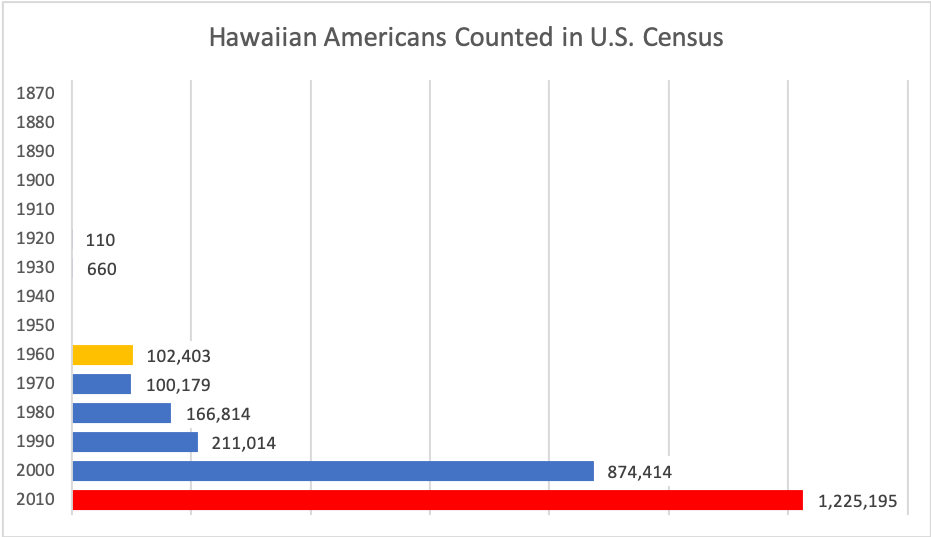Population
The United States banned immigration from Asia or parts of Asia for most of the 20th century. That changed in the 1950s, when the United States ended bans on Asian immigrants but imposed strict quotas, and the 1960s, when the United States ended quotas. These changes opened the doors for more people around the world, particularly Asia.
According to the 2010 Census, the largest groups of Asian Americans and Pacific Islanders are, in order, Chinese Americans, Filipino Americans, Asian Indian Americans, Vietnamese Americans, Korean Americans and Hawaiian Americans.

Immigration from India and the rest of south Asia was banned in 1917. The number of Asian Indians increased dramatically beginning in the 1970s.

Chinese immigration to the United States began in the 1800s, but then was restricted from 1882 until the immigration changes in the 1950s and 1960s.

After the Spanish-American War, the Philippines was a colony of the United States from 1899 to 1946. Even so, immigration from the Philippines was barred from 1924 to the 1950s and 1960s.

Hawaii became a U.S. territory in 1898 and then became a state in 1959.

Japanese immigration was limited in 1907 and then banned entirely in 1924. The United States incarcerated about 120,000 Japanese Americans (about two-thirds were citizens) during World War II. Unlike most other Asian-American groups, most Japanese Americans are native-born.

The first wave of Korean immigration came in the early 20th century to replace Chinese workers. A small wave occurred in.the 1950s and early 1960s after the Korean War, and then a larger wave occurred after the law changes in 1965.

The Vietnam War led to many Vietnamese coming to the United States as refugees, with about 150,266 refugees admitted from 1971 to 1980 and another 324,433 admitted in the 1980s, along with many from Cambodia and Laos.
There are five major ways of becoming a legal permanent resident (a legal immigrant) in the United States.
Overall, most people become LPRs by being (1) an immediate relative of a U.S. citizen, such as a spouse, child, or parent or (2) sponsored by a family member who is a U.S. citizen.
People can also obtain LPR status through (3) an employment-based preference, (4) being admitted as a refugee or being granted asylum, or (5) a diversity lottery for underrepresented countries.




